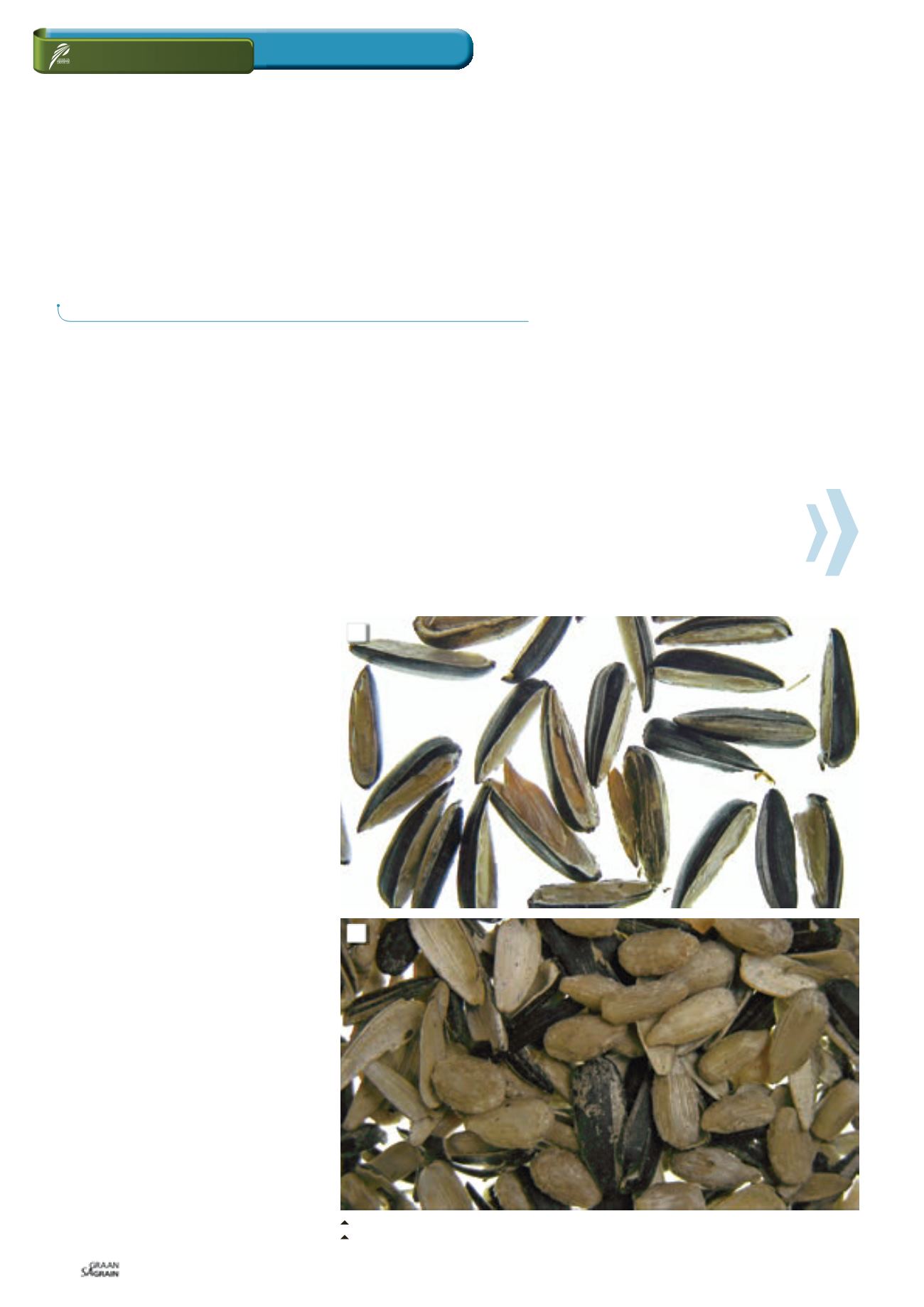

Oktober 2016
88
Sunflower crop quality of the
2014/2015 production season
T
he final commercial sunflower crop figure of the 2014/2015
season, as overseen by the National Crop Estimates Liaison
Committee, is 663 000 tons. The crop decreased by 20%
(169 000 tons) compared to the 2013/2014 season as a result
of drought conditions experienced.
The area utilised for sunflower production decreased by almost
4% from 598 950 ha in the previous season to 576 000 ha this
season. The yield decreased from 1,39 t/ha to 1,15 t/ha. The major
sunflower-producing provinces, namely the Free State and North
West, contributed 89% of the total crop.
During the 2015 harvesting season, a representative sample of each
delivery of sunflower at the various silos was taken according to the
prescribed grading regulations. 176 composite sunflower samples,
representing the different production re-
gions, were analysed for quality. The results
were published in the third annual sunflower
crop quality report.
Summary of results
Full grading was done in accordance
with the regulations relating to the grad-
ing, packing and marking of sunflower
seed intended for sale in the Republic of
South Africa (No. R 45 of 22 January 2016).
86% (151) of the 176 samples analysed for
the purpose of this survey were graded
as grade FH1 and 25 of the samples were
downgraded to ‘class other sunflower seed’
(COSF).
The majority of the samples downgraded,
were as a result of the percentage of ei-
ther the screenings or the collective devia-
tions or a combination of both exceeding
the maximum permissible deviations of
4% and 6% respectively. The percentage of
FH1 samples showed an increase compared
to the 82% and 80% of the 2013/2014 and
2012/2013 seasons respectively.
According to the grading regulations, the
determination of damaged sunflower seed
is done on a 20 g working sample, obtained
from a screened sample free of foreign mat-
ter and sclerotinia. This 20 g sample is then
shelled to retain the nucleus portion of the
seeds. Consequently, the grading of sun-
flower seed is a tedious and time-consum-
ing process.
20 g of an average sunflower sample con-
sists of approximately 462 sunflower seeds
as counted on a Numigral seed counter.
Cutting each kernel in the sample length-
wise in half with a carpet knife blade to enable inspection of the
nucleus, typically takes a grader more than 20 minutes.
As an alternative to hand shelling, the SAGL investigated the effec-
tiveness of a barley pearler to shell the sunflower seeds. To shell a
20 g sample using the barley pearler takes less than two minutes.
Based on this positive outcome, the SAGL has purchased a barley
pearler, which will assist among other things with more timeous
publication of crop survey grading results to our website. See
Photo 1
and
Photo 2
.
The national weighted average percentage damaged sunflower
seed this season was 0,27%. The previous two seasons averaged
1,06% and 0,61% respectively.
RELEVANT
JOLANDA NORTJÉ,
manager: Laboratory, The Southern African Grain Laboratory NPC
1: Damaged sunflower seed sample cut lengthwise with a blade.
2: Sunflower seed sample shelled with a barley pearler.
1
2

















